Vanda orchid: description and care at home
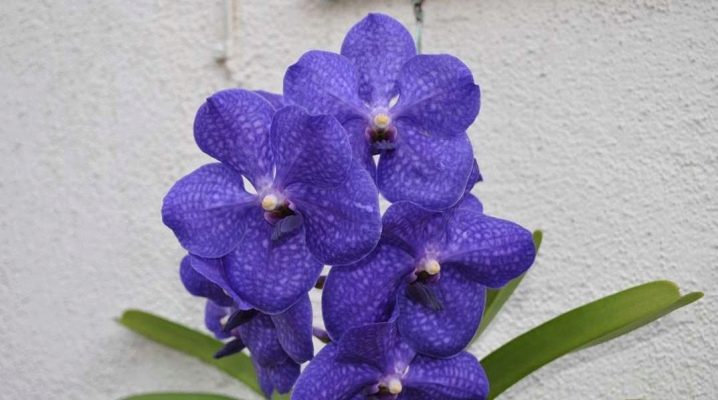
Orchid is a lush and delicate flower native to the tropical jungle. Previously, tourists occasionally met an exotic beauty in the forests of Africa and Asia, and today they successfully breed her in houses and flower beds.
Peculiarities
In a flower shop, they buy not a Vanda orchid, but a hybrid that can be grown at home. Wanting to create the perfect setting, newcomers to floriculture are looking for a description of the flower, focusing on the name. They do not find what they are looking for: the names of the hybrids are fictitious. Whatever hybrid they buy, so that it grows and pleases with flowering, they adhere to general recommendations for leaving.


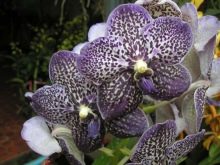
Unlike most orchids, the wanda does not have a false bulb, inside which moisture is stored in reserve.... The lack of a pseudobulb in it is compensated by impressive roots with an upper layer, which consists of dead cells.
With the help of the roots, it absorbs moisture from the environment or substrate. The specific structure of the roots protects the flower from drying out and the rays of the sun.
The royal orchid, which grows in forests, has roots up to 2 m in length and stems up to a meter in height.

Greenish leaves with a dark gray shade are characterized by an alternate arrangement on the stem. Peduncles, of which there are no more than four, develop from their sinuses. From the buds, buds bloom on them, which, as they grow, increase in size and change the original shade to a more saturated one. From flowers, of which up to 15 pieces can form on one peduncle, a sweet delicate aroma emanates. The color of the buds varies: in some subspecies they have an unusual blue hue.

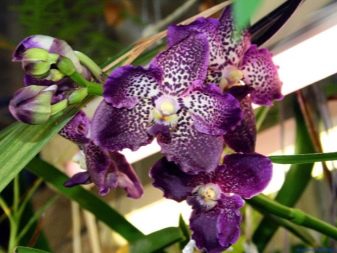
There are other features of the wanda orchid:
- this culture is evergreen;
- the length of the rest period depends on care;
- it is demanding: inflorescences will not form without creating special conditions;
- for a flower pot with a ball of long roots, choose a place where the microclimate can be controlled.
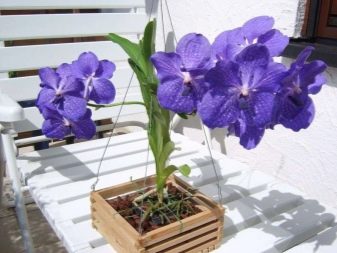
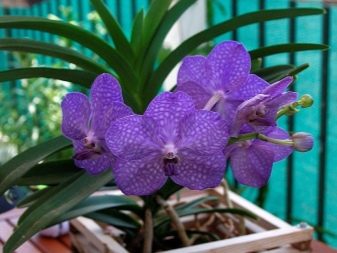
Views
Wanda is the generic name for a genus of perennial herbaceous plants from the Orchid family. It consists of 53 epiphytic, less often terrestrial or lithophytic species. On the window sills of flower growers, they often notice "Blue", "Tricolor", "Valkovataya", "Wanda Sander" and "Rothschild".
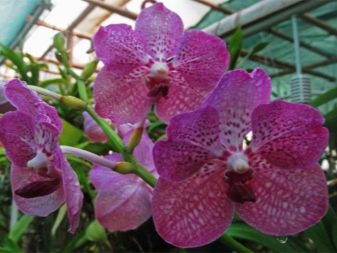
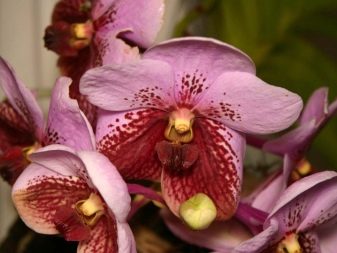
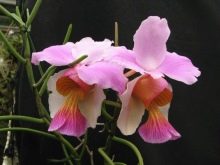


Have "Blue Wanda" a straight meter stem with two rows of leaves and powerful roots. From the axils of the leaves, a 50-centimeter peduncle is formed with an abundance of buds (6-12 pieces), thinning the pleasant aroma. The color of the buds is light blue or blue with a pattern-like mesh. The lip is darker than the petals.
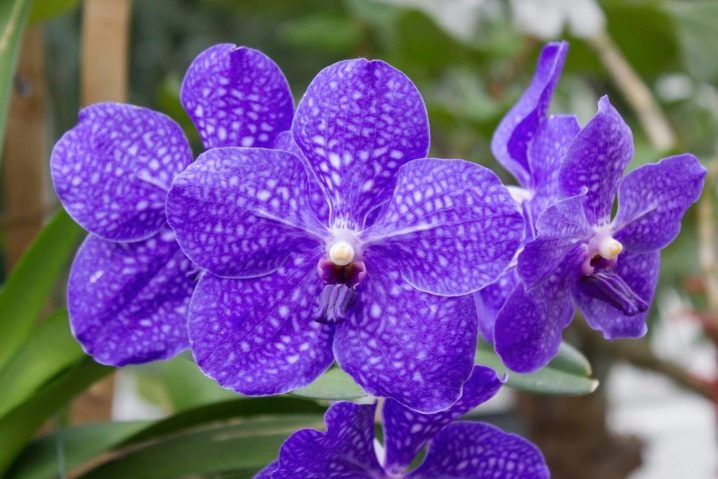
"Tricolor Wanda" - an orchid that grows on other plants, using them as a support. The stem length is up to one and a half meters. It is adjoined by leathery leaves in two rows up to 0.4 m long. One inflorescence is formed by up to 10 star-shaped buds (up to 7 centimeters in diameter). On the edge, curly petals of snow-white or pale yellow color with reddish spots. The lip is inky pink, similar to a guitar, and the petals are the same length.
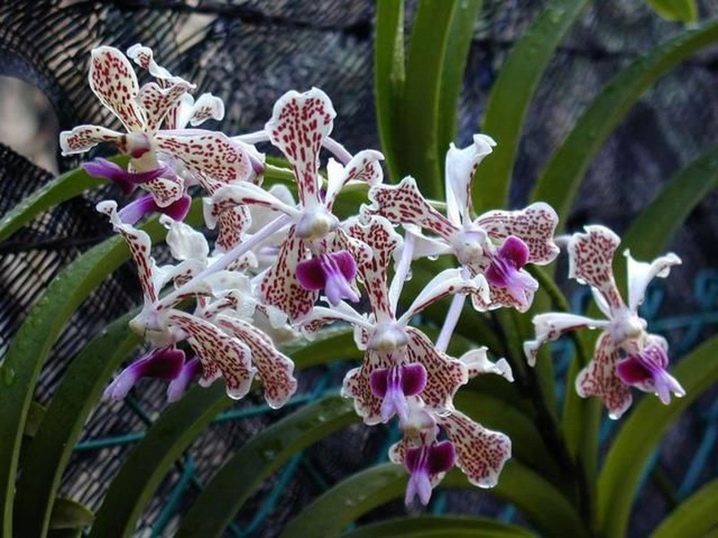
Have "Wanda Sandera" belt-like leaves. When it blooms, one inflorescence forms up to 9 buds. Their diameter is about 15 centimeters. The petals are ruddy, the lip is peach in color, the border along the edge is white.
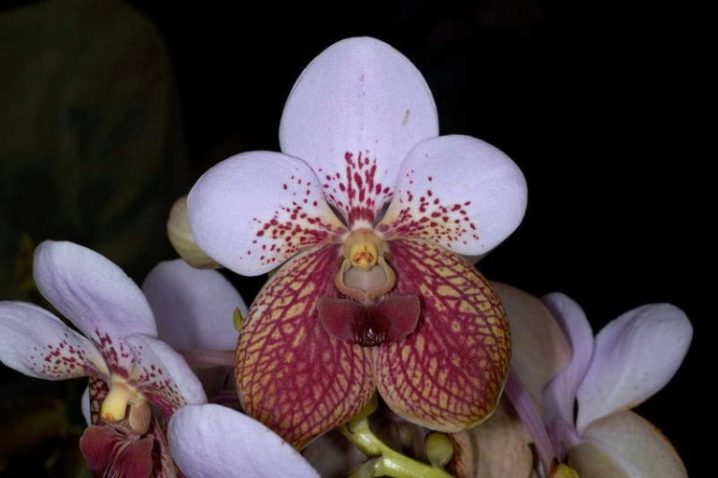
When crossing "Blue" and "Wanda Sander" received "Wanda Rothschild"... From the first plant got flowers of a blue hue, and from the second - belt-like leaves.
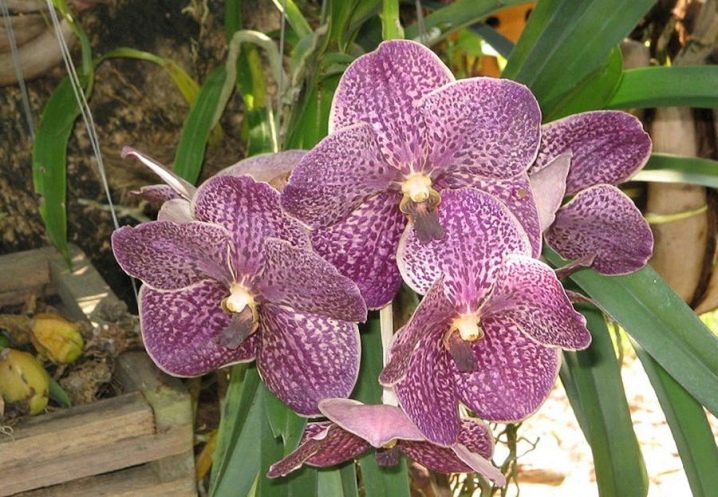
Have "Lumpy Wanda" long branched stem up to 250 cm long. It drooping or climbing with many roots growing in the air. On one peduncle, up to 6 pinkish buds with a diameter of up to 10 cm can form. The shape of the petals is either in the form of an oval or in the form of a rhombus. Their edge is wavy. The part of the lip, located in the center of the purple area and divided in two, is broadly wedge-shaped. Blades, yellow with red spots, are located on the sides.

Transfer
Experienced flower growers notice a wanda on the wall, in glass or in a pot. Do not transplant it when grown in a glass flask.
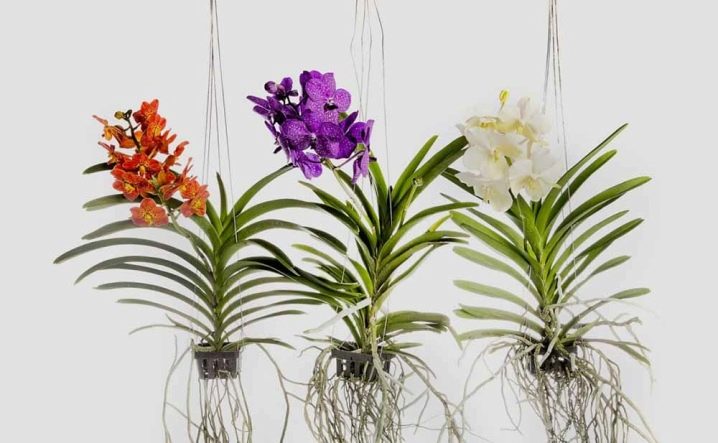
If desired, you can plant the plant in a substrate (1 part sphagnum + 2 parts pieces of bark + 1 part ash).
To do this, take a wide, but shallow plastic pot, in the walls of which holes are made. It is not necessary to buy a transparent container: the wanda needs more fresh air than sufficient lighting. Then a stick is carefully threaded through the holes for the stability of the plant, trying not to touch the roots. After that, sprinkle them with a substrate.
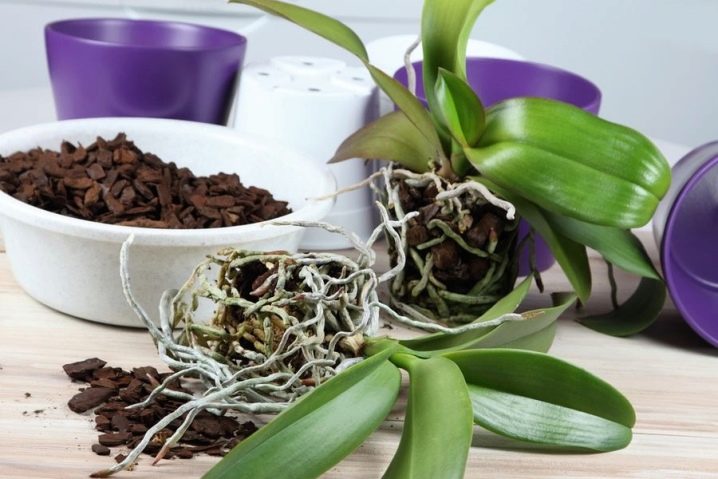
Substrate growing has a drawback. The roots of a young flower quickly fill the pot. Therefore, from time to time it is necessary to change the old container to another larger one, making sure that there are no rotting areas on the roots.
In the cases listed below, the orchid is urgently transplanted:
- poor quality or poor substrate due to caking, lack of ventilation;
- contamination of the substrate and its unbalanced structure;
- deepening of roots;
- the appearance of rot.
Transplanting will not hurt as long as the plant is young. In adult orchids, the root system is highly developed. Because of this, they often do not take root in new soil.
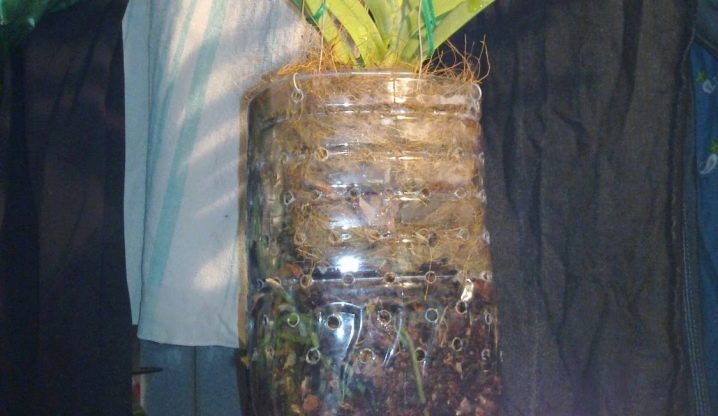
How to care?
For normal growth and development, they create special conditions for the Wanda and take proper care of her.
Temperature and humidity
Wanda is a plant that loves warmth. When grown on a windowsill in an apartment, they maintain the temperature during the day in the region from +18 to +30 and at night about +16 degrees Celsius. The normal humidity level in the room is 70 to 90%.
So that the flower does not die, they spray it, and the room is ventilated.
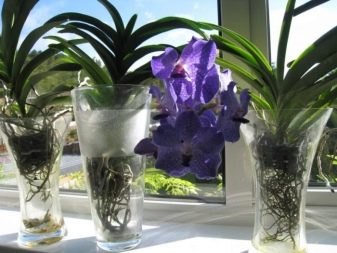
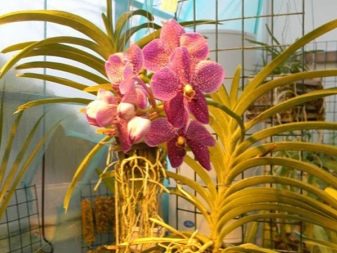
Ventilation stimulates flowering if the temperature difference between day and night is around 10 ° C. Spraying is carried out only during the day. In this case, water is used, the temperature of which is 6 ° C higher than the air temperature.
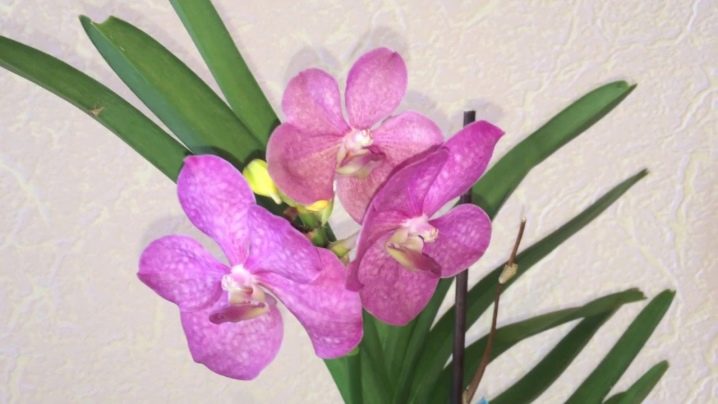
Lighting
Wanda is a sun-loving flower, but she is afraid of direct sunlight. Lighting for her should be diffused, but bright.... Leaving it on the windowsill and not darkening it from the sun, burns on the leaves cannot be avoided. When there is not enough light, the vanda does not bloom.
Daylight hours are monitored all year round. If it lasts less than 12 hours, supplement it with fluorescent lamps.


In the summer, the pot with the plant is exposed to the balcony / loggia. First, they put him in a less lit place, but gradually they accustom him to sunlight.
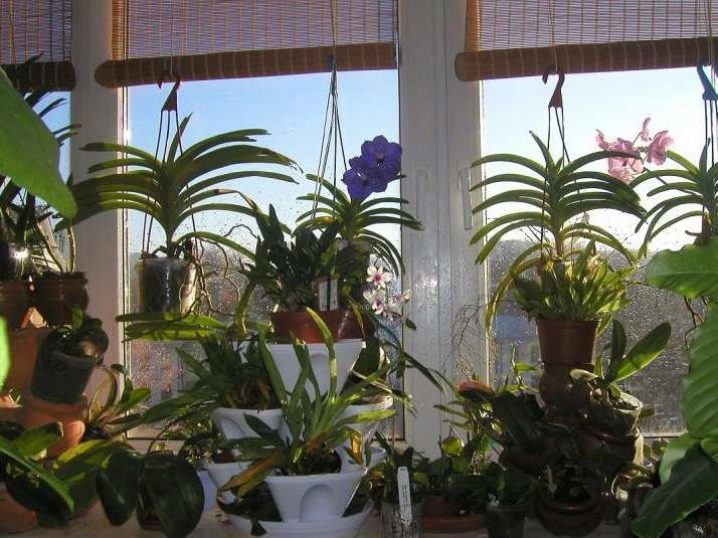
By the size and color of the sheet plate, it is determined whether there is enough light for the vanda or not:
- if the leaves are green, then everything is in order;
- if they are dark, then there is not enough light;
- if they are light green or yellowish, there is a lot of light;
- if the penultimate pair of leaves is shorter than the last, illuminate the orchid;
- if the last pair of leaves is shorter, then we overdid it with lighting.
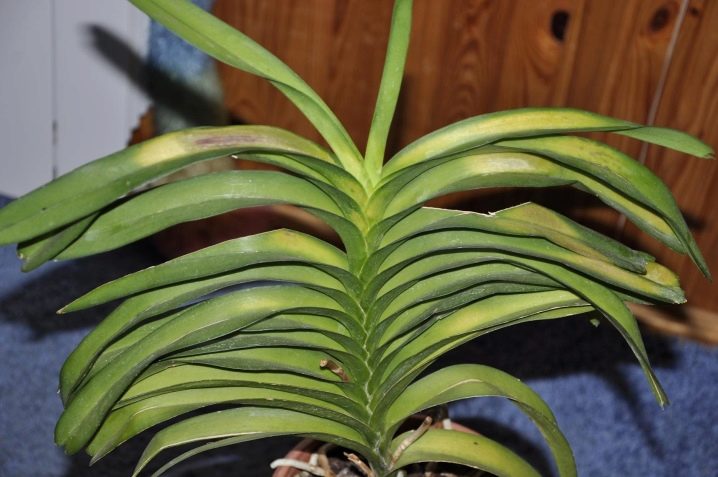
Watering
For good life and growth of the wanda orchid, dry and wet cycles must be alternated. In the summer they water it daily, and in the winter - three times a week in the afternoon. Water should not stagnate near the roots.
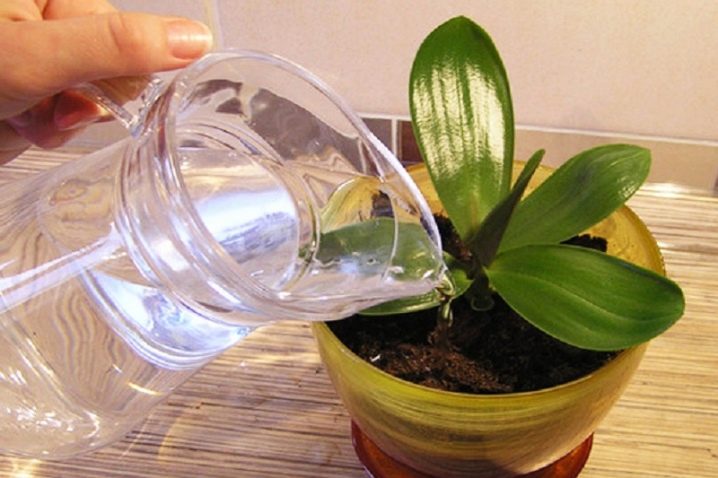
Florists water the orchid using one of the following methods.
- Hot shower... Wanda is taken to the bathroom and poured warm water from the shower until the roots turn green. Then they turn off the water and leave it in the bathroom until the pot is dry. An hour later, wipe the leaves with a cloth slightly dampened in water.
- Immersion... If the plant is healthy, place it in a bowl of water for half a minute. Then they take it out of it, wait the same amount and carry it to the windowsill.
- Watering can... Water is poured from a watering can along the edge of the pot. As soon as the liquid begins to overflow, watering is stopped. When all the excess water has drained off, water the orchid again.
- Spraying... If the wanda has bare roots, refuse immersion or watering from a watering can.
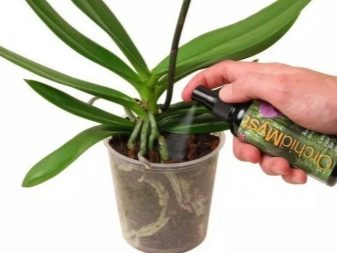
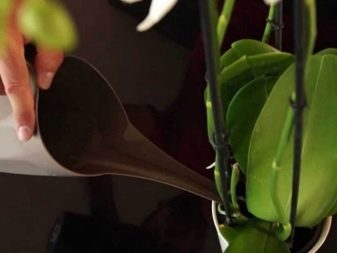
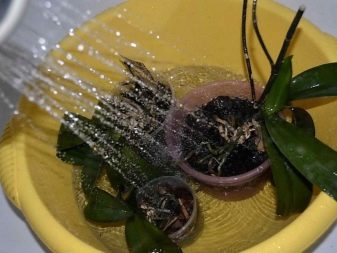

Top dressing
The plant is fed by moistening from a spray bottle or soaking in water, the temperature of which is 5-6 degrees higher than the air temperature. In winter, the procedure is carried out in the morning, and in summer at noon.
You can not moisten the orchid in the evening, so as not to provoke the development of diseases.
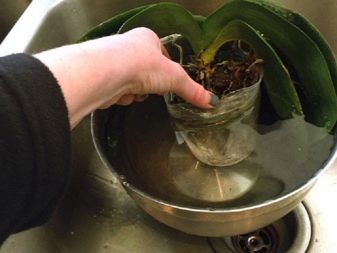
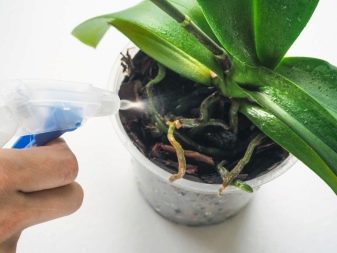
Mineral fertilizers are applied once a month. Take 10 liters of water and dissolve 13 g of the finished fertilizer in it. After thorough mixing, pour the resulting liquid over the orchid.
Fertilizers are not applied uncontrollably, otherwise it loses its visual appeal, becomes lethargic, and its upper part becomes soft. Also look at young leaves. They have a pale green stripe, the thickness of which should normally be 1 centimeter. If it is narrower, then there is not enough fertilizer, and if it is wider, then in excess.
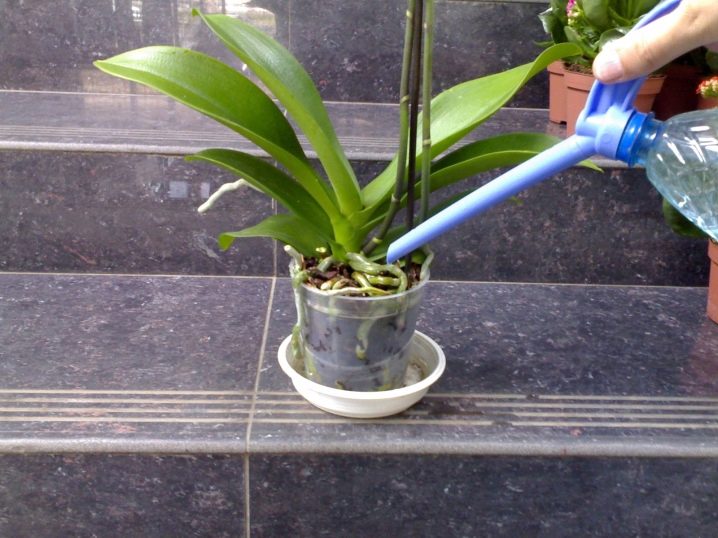
Flowering period
With a weak flowering, the orchid is fertilized. If cared for correctly, it blooms for 1.5 months several times a year.
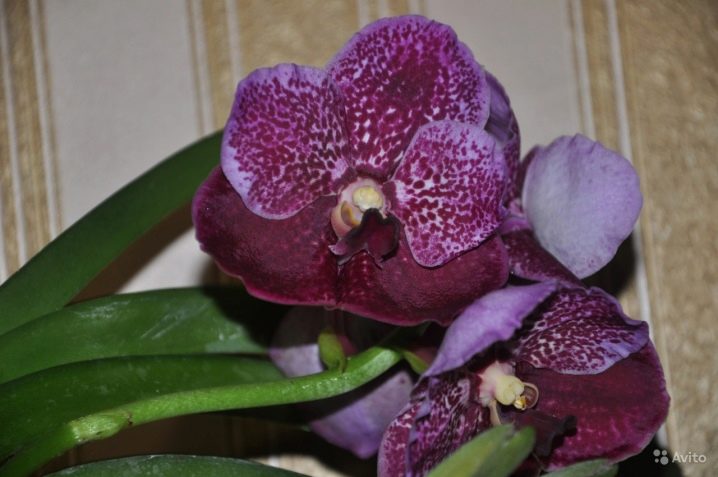
Reproduction
Newbie flower growers rarely try to propagate the Vanda orchid. They are alarmed by the stories of experienced colleagues about how hard it is to do it. Yes, there are difficulties, but they can be easily circumvented.
There are two main breeding methods.
- Children... Lateral shoots with roots are planted in another container. Moreover, they must have a height of at least 5 centimeters. The baby is carefully separated from the mother plant with a sharp knife and put under cover. At first, they contain it in conditions of high humidity - from 85% and above. The sections are sprinkled with charcoal powder. Daughter rosettes in an orchid are a rare occurrence when grown at home.
- Cuttings... Cut off the top of the stem with aerial roots. The part cut off from the flower is planted in a substrate of fine bark and sphagnum. The first 3 days the flower is well watered. Then the frequency of watering is reduced to once a month or two.
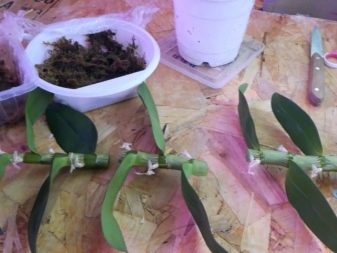
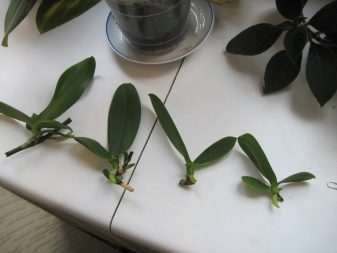
There is another way to breed an orchid. In the laboratory, they propagate it using seeds or cloning.
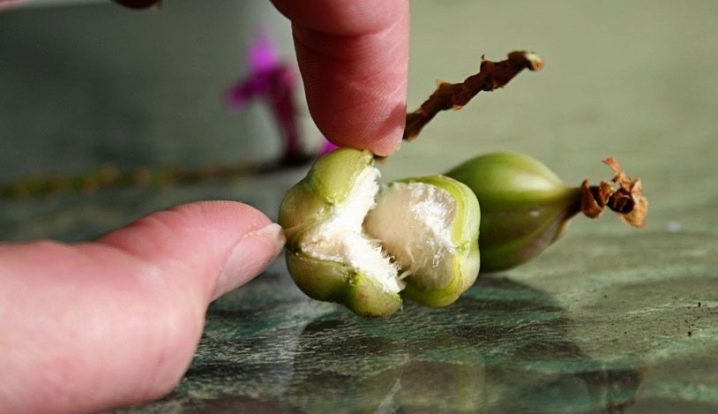
Extension of roots
Due to improper care, the Vanda orchid loses part of the root system. If desired, new root processes are built up. To do this, remove the flower from the container, wash the roots with a fungicide and dry. If there are damaged roots, prune them. Then the flower is immersed in a solution for a few minutes, which stimulates growth.
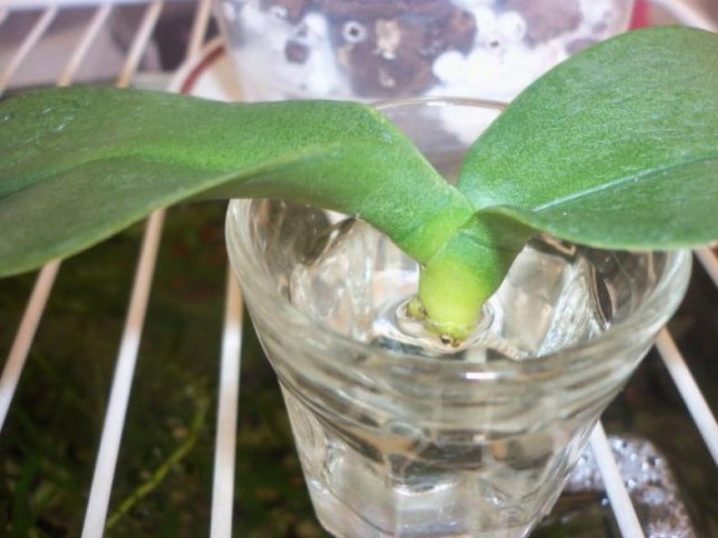
Expanded clay is poured into a pot with transparent walls. It is watered and covered with a layer of moss. A hole is made in the center of the pot. An orchid is carefully placed in it, sprinkled with moss on top. The container with the orchid is transferred to a warm, well-ventilated place. It is not watered, but a little sprinkled with water around the edges of the pot. New roots will form in a month. The same method helps to grow roots if the old ones are accidentally broken.
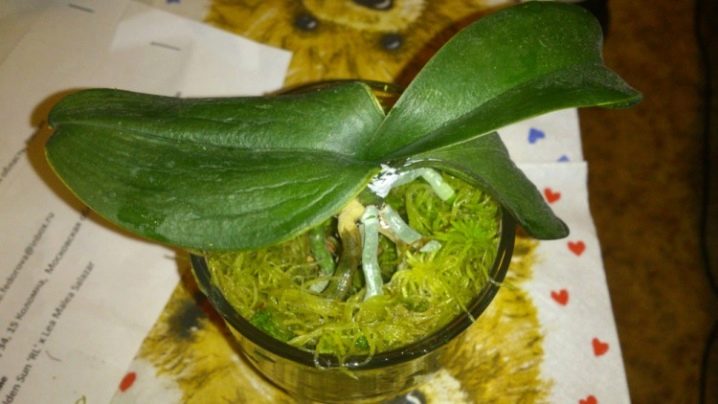
Diseases and pests
Wanda is a whimsical flower. If a novice florist bought it, he should be patient and she will thank him for his efforts. Sometimes they notice that a once healthy flower suddenly turned yellow or its leaves turned yellow. In this case, check:
- whether or not there is an unpleasant neighborhood with unwanted plants;
- what is the temperature in the room;
- what is the level of humidity and lighting in the room;
- whether fertilizers are often applied or not.
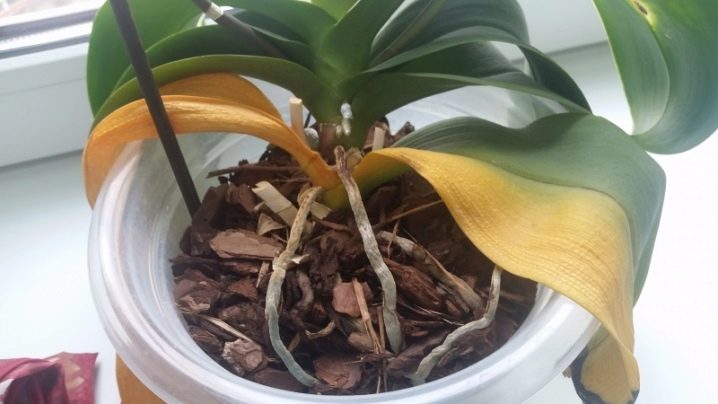
Don't be alarmed if a wanda has dropped the leaves. This happens for natural reasons or due to decay of the root system caused by an abundance of moisture.
Overheating of a flower is the main reason for dropping buds. It won't happen if you control the temperature in the room.
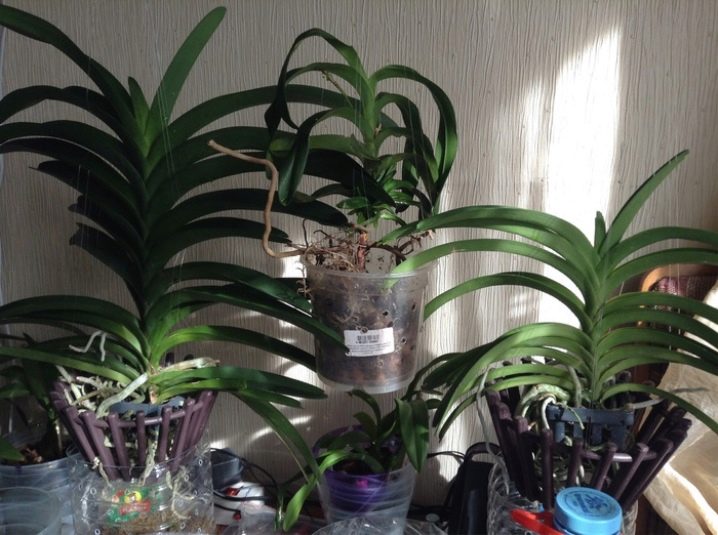
Like other orchids, wanda is susceptible to disease and pests.In many cases, the plant is sick due to improper care, lack of control over air humidity and indoor temperature.
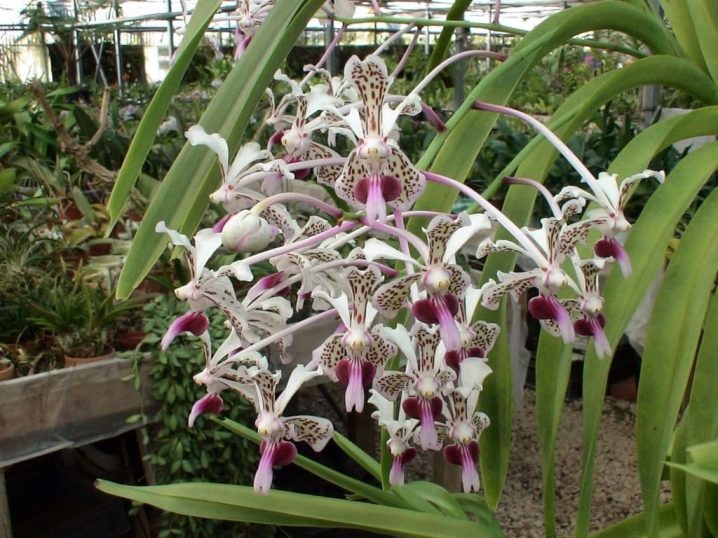
Name of the disease | Causes | Signs | Treatment |
spotting | high humidity in the room, uncontrolled watering, causing waterlogging of the substrate | wart spots on the underside of the leaf or round black specks on the upper side of the leaf plate | creating favorable conditions for the plant, disinfecting soil and water for irrigation using an antifungal agent |
rot | excessively moistened substrate, coolness in the room, transplanting into a container that is not suitable in size | decay of the root system, stem, softening and blackening of the flower | disinfection of soil and water, removal of all roots with traces of decay and hanging the orchid with the roots up, treatment with an antibiotic solution |
sheet cracks | mechanical damage, uncontrolled application of fertilizers and baits, excess substances in the substrate, sunburn, hypothermia after watering | cracked leaves | removal of damaged leaves |
fusarium wilting | - | black spots where leaves and stems join, leaf crumbling and dropping | treatment of the plant with "Fundazol" |
pests | - | the appearance of small insects on the leaves | replacing the substrate, washing the roots using folk remedies (garlic or soap-alcohol solution) |

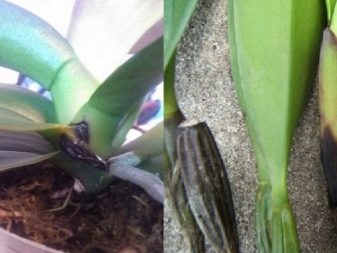

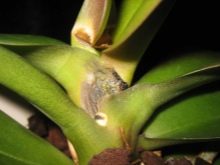

Prophylaxis
You don't have to treat your orchid if you follow these tips:
- use warm water when watering;
- provide her with good lighting;
- apply top dressing clearly on schedule after assessing the condition of the flower.
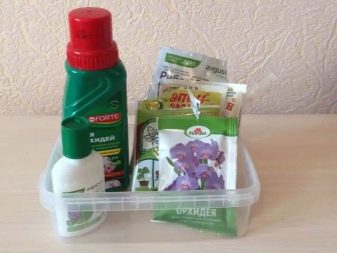
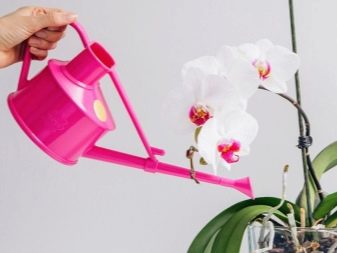
The vanda orchid is an exquisite flower. It is no coincidence that she is called the "queen of flowers". Despite the whimsicality, she has taken root in houses and apartments, but requires attention to herself, like a queen.
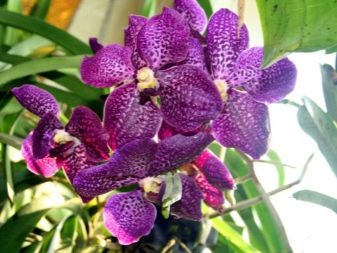
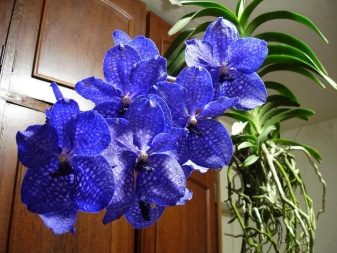
If you do not deviate from the recommendations of experienced flower growers in watering, lighting, temperature and humidity, it will not get sick and pests will not appear on it.
For more information about Wanda orchids, see the video below.































The comment was sent successfully.